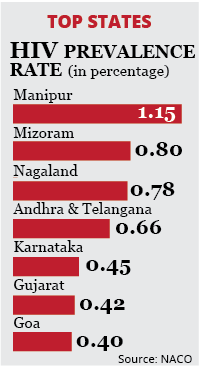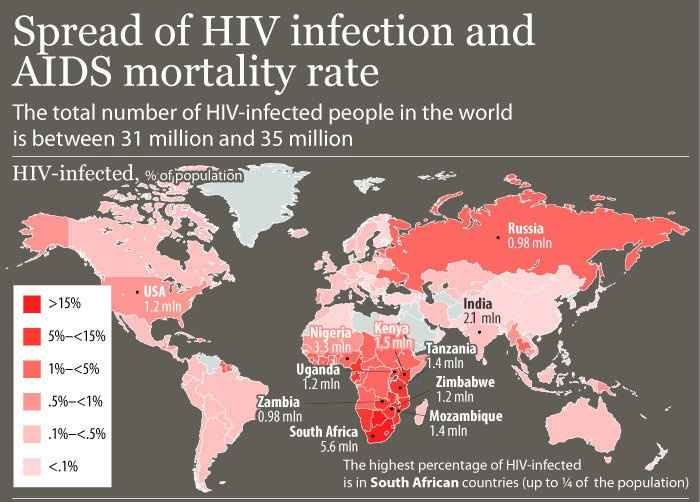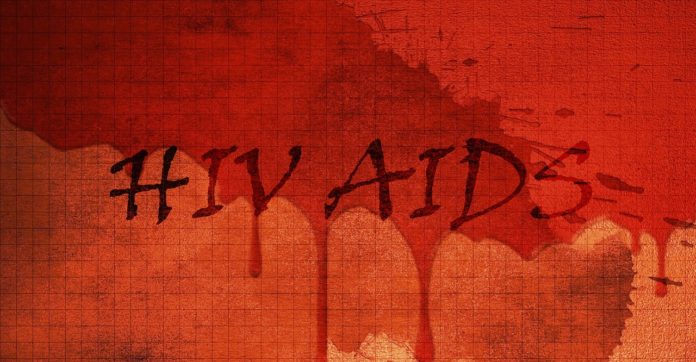 Months after adopting a World Health Organisation (WHO) guideline of treating all HIV+ patients irrespective of their immune status, with a special drug combination, India has registered 50,000 new patients, taking the total number of patents currently receiving anti-retroviral therapy (ART) in the country to 11 lakh.
Months after adopting a World Health Organisation (WHO) guideline of treating all HIV+ patients irrespective of their immune status, with a special drug combination, India has registered 50,000 new patients, taking the total number of patents currently receiving anti-retroviral therapy (ART) in the country to 11 lakh.
Despite low prevalence of 0.26%, India, thanks to its massive population, is home to the third highest number of people living with HIV – estimated to be around 21 lakh. Of these about 14 lakh are known to be HIV positive. However not all of them are on ART because of an earlier policy of starting it only when a person reaches a certain CD4 count – an estimate of how much his or her immunity is compromised. Standard antiretroviral therapy (ART), as defined by WHO consists of a combination of antiretroviral (ARV) drugs to maximally suppress the HIV virus and stop the progression of HIV disease. ART also prevents onward transmission of HIV.
India is home to the third highest number of people living with HIV (around 21 lakh)
“In July 2016 ‘Test and Treat’ guidelines were released by WHO; the idea being to start people living with HIV early on ART without waiting for their immunity to fall to significant levels. We adopted it in April this year. As per June reports approximately 11 lakh people are on ART at 531 ART centers and 1108 link ART centres. Approximately 50,000 new patients have been initiated on ART in May and June 2017 after rolling out ‘Test and Treat’ guidelines – about 4.5% of the total number of people currently on the treatment,” said a senior health ministry official. India is a signatory to the UN strategy of 90-90-90 and is aiming at ending AIDS as a public health threat by 2030. The strategy aims to ensure 90% of people living with HIV know their status, 90% are on ART and 90% have viral suppression.
Protocol for starting patients on ART has repeatedly been revised over the years. In 2004, ART was started when a patient had CD4 count of less than 200. This was subsequently revised to 350 in 2012 and 500 in 2015. CD4 cells, also called T-cells, T-lymphocytes, or helper cells are an important component of the body’s immune system. CD4 count is a marker of immune status, lower counts being associated with more compromised immunity.

Latest WHO policy guidelines however say that CD4 count should no longer be used as the parameter for deciding whether to start ART. “Anyone infected with HIV should begin antiretroviral treatment as soon after diagnosis as possible. With its “treat-all” recommendation, WHO removes all limitations on eligibility for antiretroviral therapy (ART) among people living with HIV; all populations and age groups are now eligible for treatment.The expanded use of antiretroviral treatment is supported by recent findings from clinical trials confirming that early use of ART keeps people living with HIV alive, healthier and reduces the risk of transmitting the virus to partners,” said a WHO statement from 2015. The apex health body came out with the relevant guidelines a year later.



Hey, you used to write fantastic, but the last several posts have been kinda boring¡K I miss your tremendous writings. Past several posts are just a little out of track! come on!